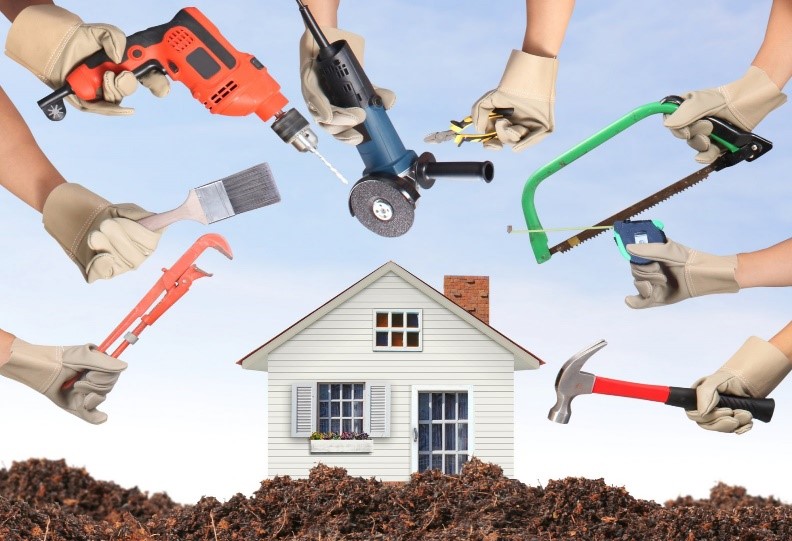Home » News and Events » Wear Safety Goggles for Those Do-It-Yourself Home Projects
Wear Safety Goggles for Those Do-It-Yourself Home Projects
Posted by: Florida Eye Microsurgical Institute in Worth Sharing...

This summer, many people are staying close to home for backyard hang-outs and summer fun. While spending more time at home, many people are strapping on their tool belts, putting on their gardening gear, and getting to work on DIY home improvement projects.
Did you know that about half of all eye injuries happen right at home?
Home activities that can injure your eyes include:
- Cleaning. Chemicals like bleach in household cleaning products cause 125,000 eye injuries each year.
- Home Improvement. Screws, nails, and hand tools can launch into the air and your eyes. Power tools can also send wood chips or other substances flying into the air.
- Yard Work. Lawnmowers, trimmers, and even shovels can throw dirt and debris into the air. Branches, twigs, and thorns can also be dangerous.
According to the American Academy of Ophthalmology, about three out of 10 people wear protective eyewear during home projects that could hurt their eyes. The good news? Simply wearing protective eyewear can reduce your risk for eye injury by 90 percent.
The good news is that 90 percent of eye injuries are completely preventable if we follow eye safety instructions and use eye protection!
The American Academy of Ophthalmology urges every household to have at least one pair of ANSI-approved protective eyewear. (“ANSI-approved” means the protective eyewear is made to meet safety standards of the American National Standards Institute.)
Take Precautions With Those DIY Projects
We usually associate safety goggles with construction workers, but if you think about it, building a birdhouse to hang in your backyard is a construction project, too—and it shares some of the dangers with larger-scale projects. Most home improvement projects, from painting the kitchen to building a deck, involve materials or tools that could be hazardous to the eyes.
Polycarbonate safety glasses and face shields are great ways of keeping your eyes safe against flying splinters of wood, drips of paint, or dust. Even lawnmowers and weed eaters can fling tiny rocks or twigs in any direction, so safety glasses would come in handy for that type of project as well. Regular glasses are too fragile to offer reliable protection and can cause even worse damage if they shatter near the eyes.
Protect Your Eyes From Household Cleaners
The household cleaners, such as bleach, cause as many as 125,000 eye injuries every year. Follow all safety instructions on your cleaning products, and wear safety glasses to protect against any splashes.
Be Prepared With Eye Injury First Aid
Eye injuries tend to fall into two major categories: foreign body in the eye and foreign body penetration of the eye. When it’s the latter, the best thing to do is immediately seek medical attention. Do not attempt to remove the foreign body and do not touch the eye. Cover the eye with a rigid shield (such as a paper cup taped in place) to keep it from being disturbed and get to the hospital.
When it’s the former, it’s still best to avoid touching the eye and to seek medical attention in case the damage is more severe than it looks. However, in the short term, the foreign body can often be flushed out with water. Flushing with water for at least 20 minutes is also an excellent way to neutralize any harmful chemicals splashed in the eyes.
Bring Your Eye Safety Questions to Us!
If you have any questions or concerns about eye safety in your home, don’t hesitate to call us at 561.737.5500.
